Aquarium fish for beginners: which ones to choose and how to keep them?

Aquarium is an exciting activity, it gives an opportunity to create beautiful water worlds and touch the secrets of underwater life. It is interesting to watch the fish, it harmonizes the internal state, soothes. Keeping and breeding fish captivates both adults and children. And such a hobby disciplines young breeders, teaches care and love for the world around them.
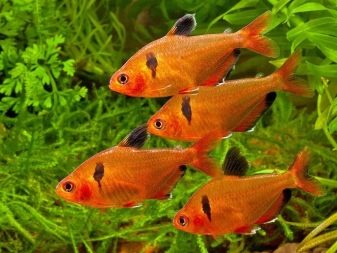
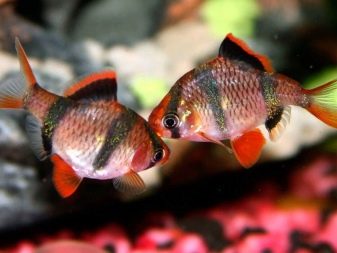
What kind of fish is better to have?
It is better to populate your first aquarium with unpretentious inhabitants, for example, viviparous fish. They do not require special care, they multiply quickly and easily. Females do not spawn, but "give birth" to fully formed fry. Below is a list of viviparous aquarium fish.
- Guppy - the simplest fish, while very beautiful, especially males. Guppies have many species that differ in color. The long tail, fins and abdomen can be of different shades: red, orange, green, light blue, blue. It is very interesting to breed fish, you can cross representatives of different species with each other and get the original color of fry. The maximum size of males is 4 cm, females are 6 cm.
- Swordsmen - you can recognize them by their unusual caudal fin. In males, part of the tail is elongated and pointed, in appearance it resembles the blade of a sword. Most often, you can find red swordtails in the aquarium, but these fish have a large number of species of various shades. In a large aquarium, they can grow up to 10 cm (excluding the tail "sword").
- Pecilia - outwardly similar to swordtails, but their tail is of the usual shape. There are many varieties, every aquarist will be able to choose a fish to their liking.There are red, spotted, yellow, orange, and silver platies. The size of an individual can be from 4 to 12 cm.
- Mollies Is a close relative of the platia. There are also a large number of types and color options. The most common completely black fish. They can grow up to 10 cm, but most often they are no more than 7 cm in length.
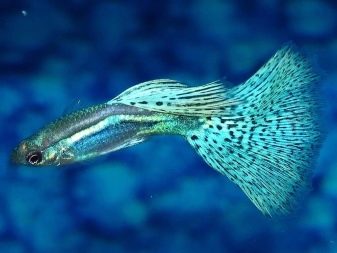
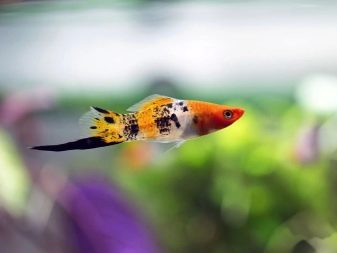
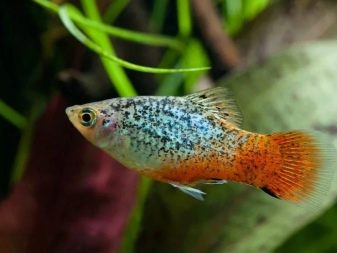
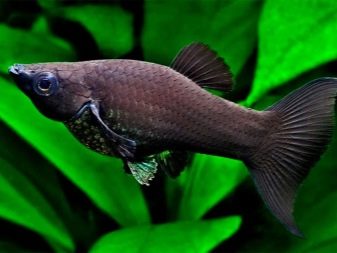
You can also choose spawning fish, there are easy-to-maintain species that are suitable for beginners. During the spawning period, females lay eggs, from which fry develop. Below are the most unpretentious spawning fish and their descriptions.
- Danio rerio - graceful fish, grows in length no more than 5-6 cm. Despite its small size, it looks very impressive in the aquarium. Blue and white stripes run along the body, starting from the gills and extending to the tip of the tail.

- Cardinals - miniature fish with a bright color, a fluorescent strip runs along the body. The maximum size is only 3 cm, they can live in a small aquarium. It is best to keep a large flock of cardinals - 10-15 pieces.
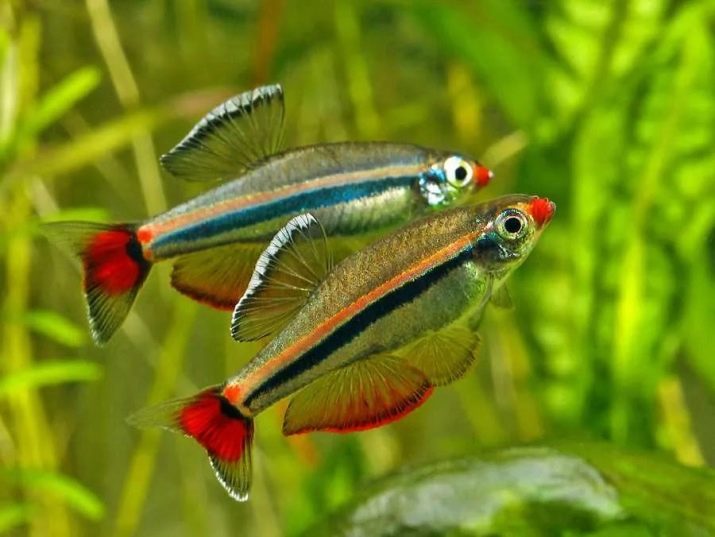
- Neons - fish with a shiny, iridescent belly. They look especially interesting against a dark background. They grow up to 4 cm, a small flock can even be placed in a 10-liter aquarium.
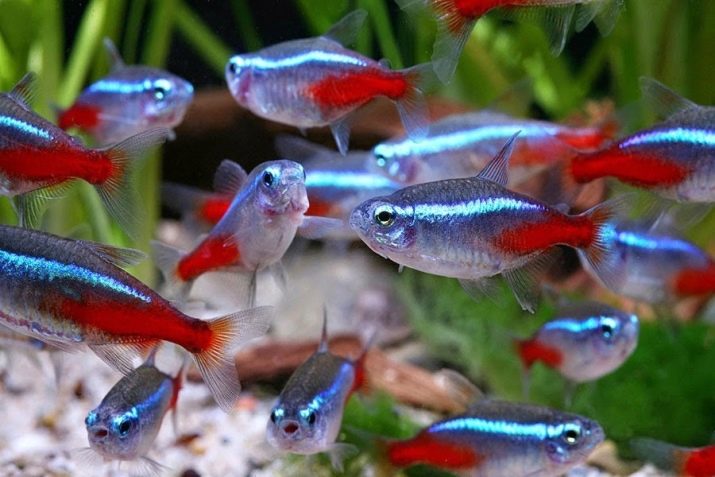
- Corridors - peaceful catfish. They live in the lower layer of water and love to dig in the ground. They look for food at the bottom, so it is necessary to ensure that the food reaches the bottom layer of water. There are special feeds in the form of pellets that sink well.
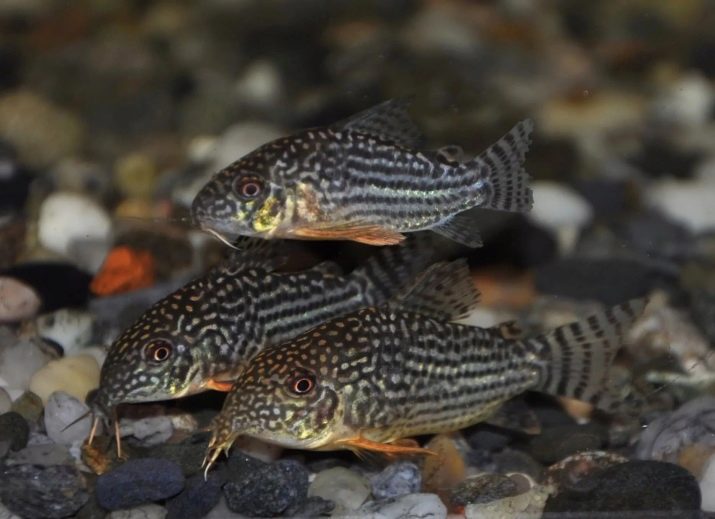
- Ancistrus - excellent cleaners. With the help of a suction cup, they remove fouling from decorative objects and the walls of the aquarium. They grow quite large - up to 15 cm.
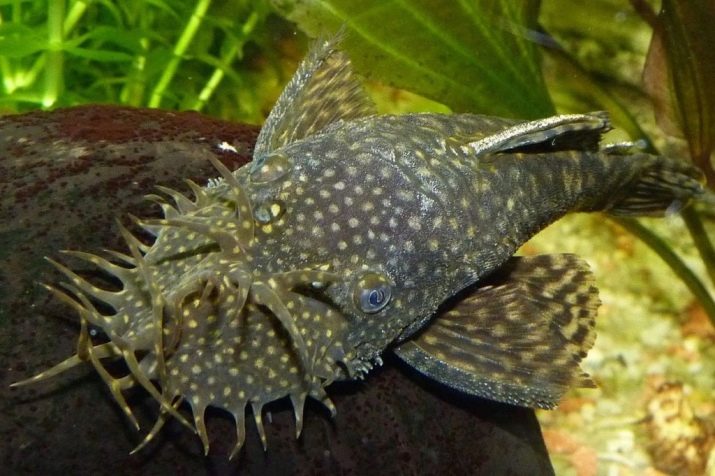
- Gourami and lalius - labyrinth fish. To keep them, it is not necessary to install an aeration system in the aquarium. Labyrinthine species capture air from the surface of the water. The fish have an attractive appearance, there are many subspecies and color options. Gourami grow up to 10-12 cm, and lalius - up to 7-9 cm.

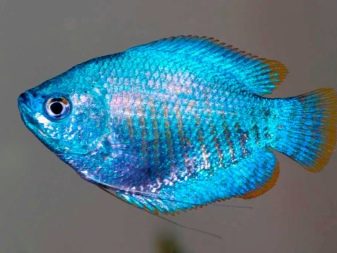
- Cherry barbs - schooling fish up to 4 cm in length. The abdomen and fins are bright scarlet. This is the most peaceful subspecies among the rest of the barbs.
It is not recommended to keep fish such as discus, cichlids, astronotuses, labeos and bots in your first aquarium. These species are sensitive to water conditions and require a fairly spacious aquarium. With insufficient care, the fish will get sick and may die, and this, in turn, can discourage the beginner from doing aquarium hobby.
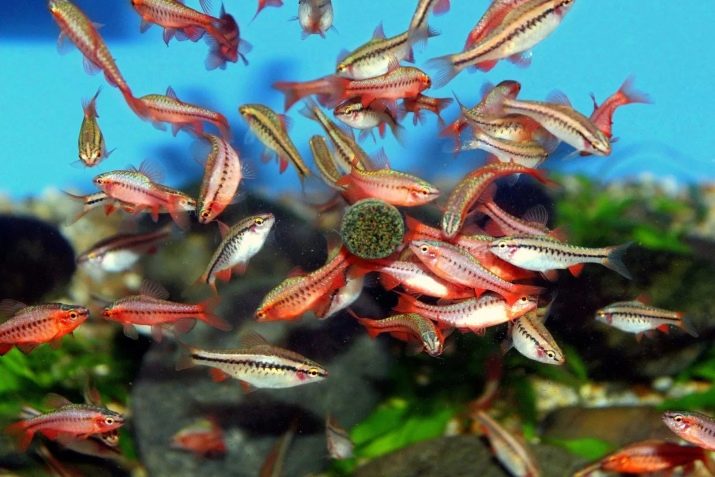
How many fish can you keep in one aquarium?
It is believed that one aquarium fish needs 3-5 liters of water. This is a very conditional calculation, because a lot depends on the size, nature and other features of the species. And also it should be taken into account in which layer of water the fish live. Gourami, for example, prefer the upper layer of the reservoir, and even if there are enough of them in the aquarium, you can still add a couple of catfish to them. After all, bottom and labyrinth fish spend most of the day at different levels of the aquarium, so they do not interfere with each other.
Many people choose a 10-gallon aquarium for the first time. Beginners believe that a small body of water is easier to care for, but this is not the case. In a small space, the aquatic environment becomes more polluted. Yes, and you can't settle a lot of fish in such a limited space:
- guppies - 4 pcs.;
- neons - 4 pcs.;
- cardinals - 2 pcs.;
- zebrafish rerio - 2 pcs.;
- dwarf catfish - 3 pcs.;
- mollies - 1 pc .;
- platies - 1 pc.;
- barbs - 1 pc.;
- lalius - 1 pc.
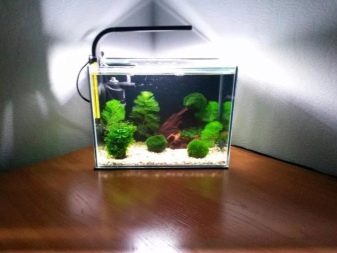
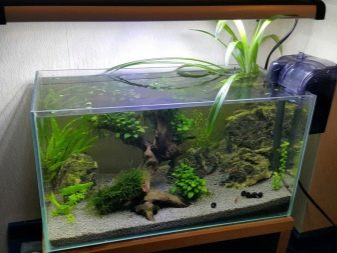
The aquarium, in which you can place the maximum 4 fish, is not so interesting, so it is better to choose a larger container. In a tank of 20 liters, it is already possible to contain 2-3 times more fish, for example, 8 guppies or 2-3 mollies. A 50-liter aquarium will allow you to create interesting combinations of different species of aquarium fish. This volume of capacity is considered the best option for beginners. Below are the options for different types of fish and their number for a 50 liter tank:
- 8 guppies + 8 neons + 3 corridors;
- 5 mollies + 3 swordtails + 5 platies;
- 10 neons + 5 zebrafish + 2 ancistrus;
- 3 pearl or marble gourami + 4 lalius + 2 any peaceful catfish;
- 10 cherry barbs + 5 swordtails + 3 corridors.
If a novice breeder is really fond of aquarium hobby, then in the future you can buy a bigger aquarium - 100 liters, and leave a smaller tank for spawning or a nursery for fry.
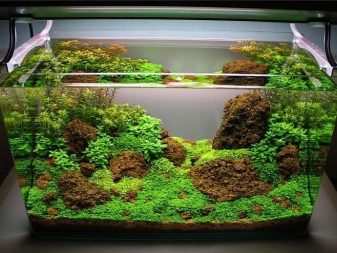
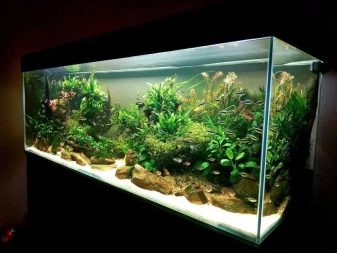
Feeding rules
The success of keeping fish depends on proper feeding. Pet stores have a large selection of dry food. There are flakes and pellets that will not only provide good nutrition, but also enhance the color of the fish. They feed aquatic inhabitants 2 times a day in small portions. It is believed that everything should be eaten in 3 minutes. If food remains, it is removed from the aquarium. Leftover food will rot over time, release harmful substances and pollute the water.
It is not recommended to constantly keep fish on "dry rations", the diet should be varied with live food:
- bloodworm;
- pipe worker;
- brine shrimp;
- with a core;
- gammarus.
Such a high-protein food is especially necessary for fish before spawning. Worms and larvae are thoroughly washed and, if necessary, cut into small pieces. Frozen live food is available and is safe for infections, albeit less nutritious. For feeding, you can purchase a special cone-shaped feeder with a net. It is very convenient: all food is inside this structure until the fish eats it.
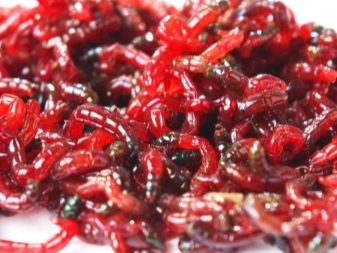
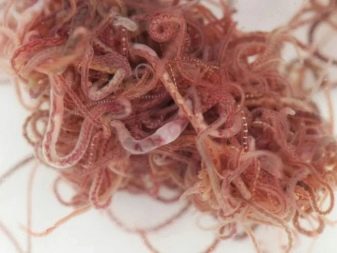
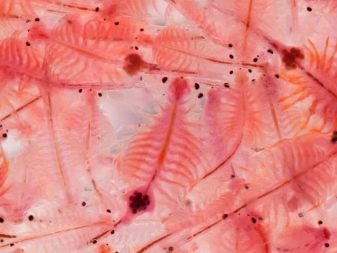
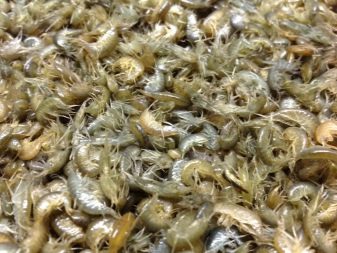
Some fish species like plant food, especially catfish. Leaves of lettuce, dandelion, cabbage, cucumber and zucchini slices are scalded with boiling water and dipped into the aquarium. You can use a fork as a weight. There are some more “off the table” products that will please aquarium pets:
- sea fish;
- milk;
- caviar;
- squid;
- egg yolk;
- beef heart.
You can cook vitamin mince yourself. Finely chop several of the above ingredients, add iodized salt (on the tip of a knife), spirulina and vitamin D in oil. Such feeding compensates well for the lack of vitamins and is recommended for weakened individuals with a dull color. The main thing is not to overfeed, since some species lack a sense of satiety. Overeating causes such a disease as obesity of internal organs, it can destroy the aquarium fish.
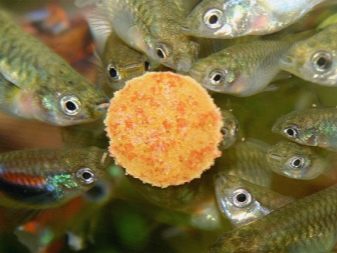

Care
Before starting the fish, you should prepare the aquarium. It is equipped with filtration and aeration systems, and fluorescent lamps are installed. Good lighting is essential not only for fish, but also for algae. Living plants must be present in the reservoir, they contribute to the formation of an environment favorable for fish. Several snails are launched: fiz, coils and melania will keep the artificial reservoir clean.
The water in the aquarium must meet the required parameters, which are slightly different for each type of fish. Aquarium heaters are used to raise the temperature, and special conditioners are used to soften the water. At the pet store, you can buy test strips that determine the hardness, acidity of the water and the amount of nitrates. It is important to maintain all water indicators within acceptable values, because they strongly affect the color of fish, their behavior and health.
Once every 7 days, part of the water in the aquarium is replaced with fresh water. To do this, 25% of the liquid is drained, and fresh settled water is poured in its place. Breeders do not recommend making a complete replacement, this will disrupt the ecosystem that has formed in the aquarium. Water is completely drained only in case of some infectious diseases of fish. In this case, high-quality disinfection of decor items, soil and tank walls is carried out.

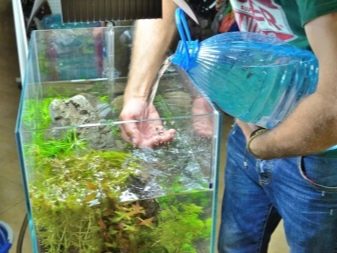
Fish can get sick. This is not always associated with insufficient care. Fungus and parasites can be introduced into an aquarium with plants, soil, or new fish.You should be careful when moving in new neighbors, the fish you just bought should be kept separately in quarantine. The following symptoms will indicate the disease:
- white bloom and cloudy spots on the body;
- destruction of fins;
- ruffle scales;
- white feces;
- strange behavior, for example, the fish swims sideways or lies on the bottom;
- too swollen abdomen;
- bulging eyes.
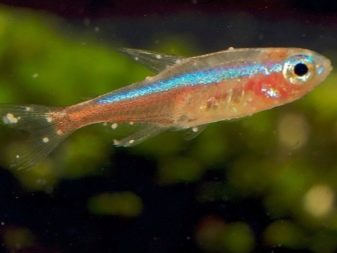

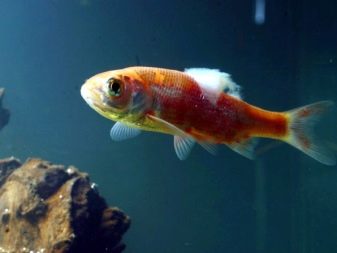
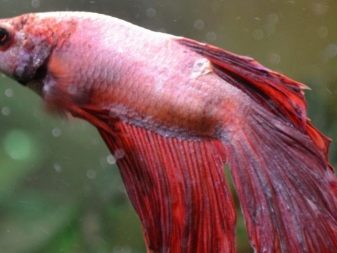
It is important to plant fish with suspicious symptoms in time before they have infected their neighbors. Many illnesses are successfully treated with short-term baths with antibiotics and other drugs. Pet stores have a large selection of remedies for fungus and infections. But before starting treatment, use tests to check the nitrate content in the water. Poisoning with this particular substance is the most common disease in fish. In order for the level of nitrates not to exceed the permissible values, it is necessary to adhere to the following rules:
- use a siphon to clean the soil from waste;
- do not forget about the weekly water change;
- filter and settle tap water before adding it to the reservoir;
- do not overfeed fish and remove uneaten food.
Occasionally, nitrate levels are high in overcrowded aquariums, so it is important to keep track of fish numbers. Newly born fry can be presented to friends or sold.
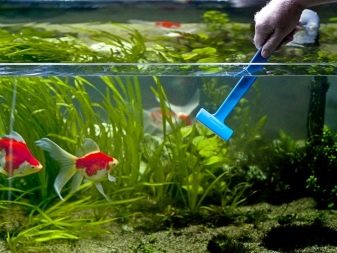
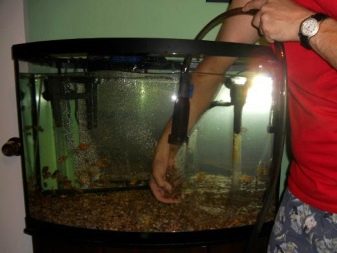
Breeding nuances
Viviparous fish reproduce well and quickly at home. They do not even need special conditions for this. Guppies are especially fertile - females during their life can bear offspring up to 10 times, 15-30 fry. But adults can destroy juveniles, so if the fish spawn in a common aquarium, then you should take care of the protection of the babies. Dense bushes of plants, pottery shards, driftwood and decorative houses will be a reliable shelter for fry. But it is best to deposit them in a separate tank.
Breeding spawning fish requires special conditions:
- separate container;
- raising the temperature of the water;
- preliminary seating of a female and a male in different aquariums;
- feeding with live food.
The spawning process is very interesting. During the mating dance, the female lays eggs, and the male fertilizes it. Some males pre-build a nest and carefully look after the offspring. Gourami, for example, make a nest of foam on the surface of the water, into which each egg is carefully collected. Most often, immediately after spawning, the female is removed, and sometimes the male too.
The fry develop on days 5–8. They begin to swim around the aquarium in search of food. The ideal complementary food at this time is daphnia. You can also use specialized dry food, as well as egg yolk. Babies grow quickly, and when they get stronger and become like adult fish, they can be put into a shared aquarium.
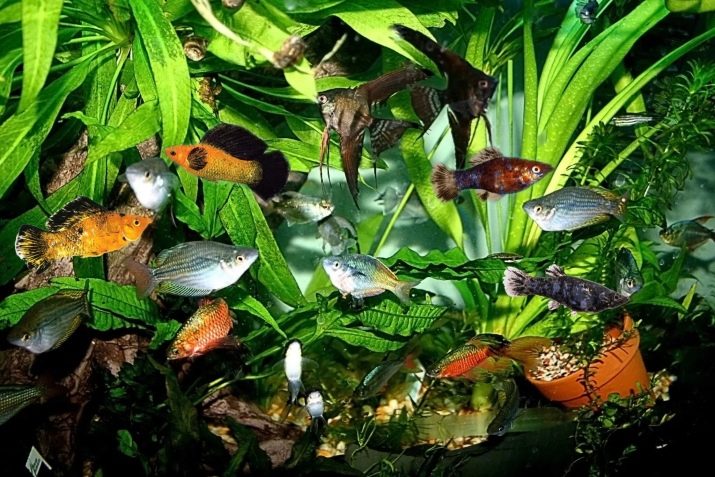
We take into account the compatibility of species
You need to know that not all fish get along with each other. Therefore, for peaceful coexistence, it is necessary to take into account a number of important points.
- For guppies and other fish with long fins, the proximity to barbs can be dangerous. The latter can bully and nibble on the beautiful fins of veiled fish.
- In some species, a territorial dispute may arise between males. For example, this is typical for gourami. It is better to keep 1 male and several females in the aquarium.
- The size of the fish should also be taken into account, it is better not to keep small species with large ones.
- And the most important thing is not to settle peaceful fish with predators. So, cichlazomas can easily eat a flock of neons.
Despite these limitations, all fish species recommended for beginners are peaceful and get along well with each other. The main thing is not to populate aquatic pets too densely, to provide the required number of shelters and, when new neighbors move in, monitor their behavior and adaptation.
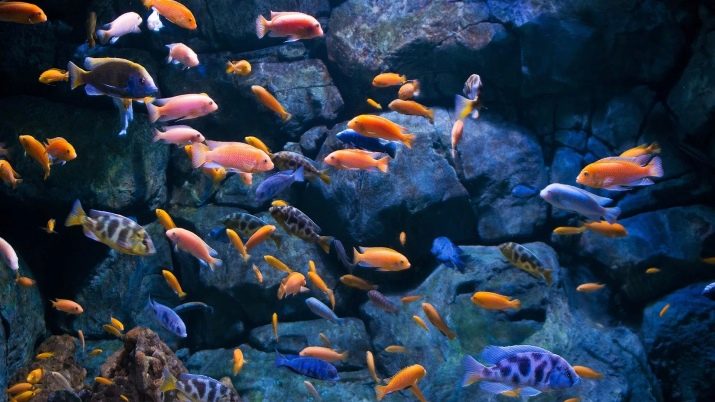
For five unpretentious types of fish, see the video.








